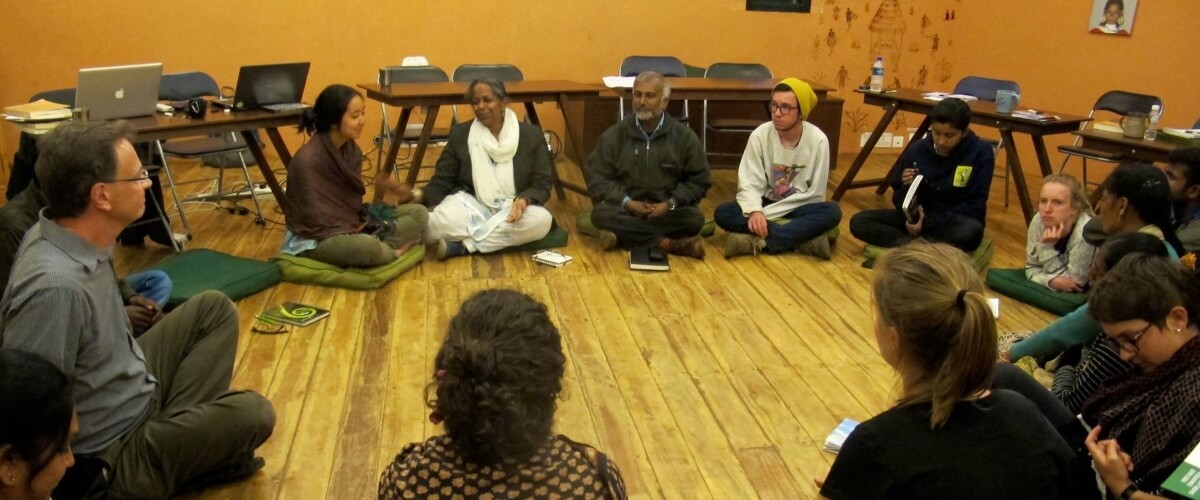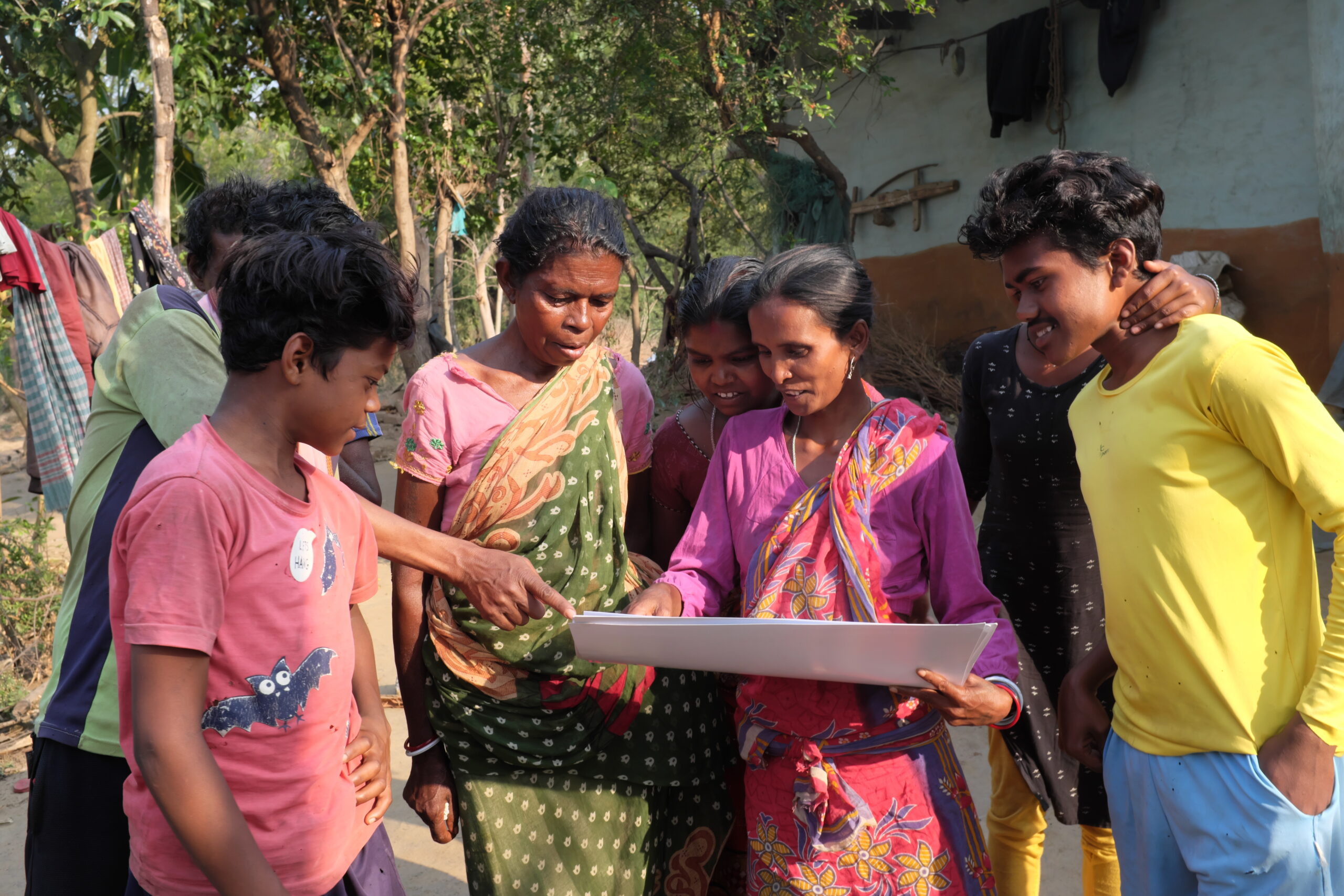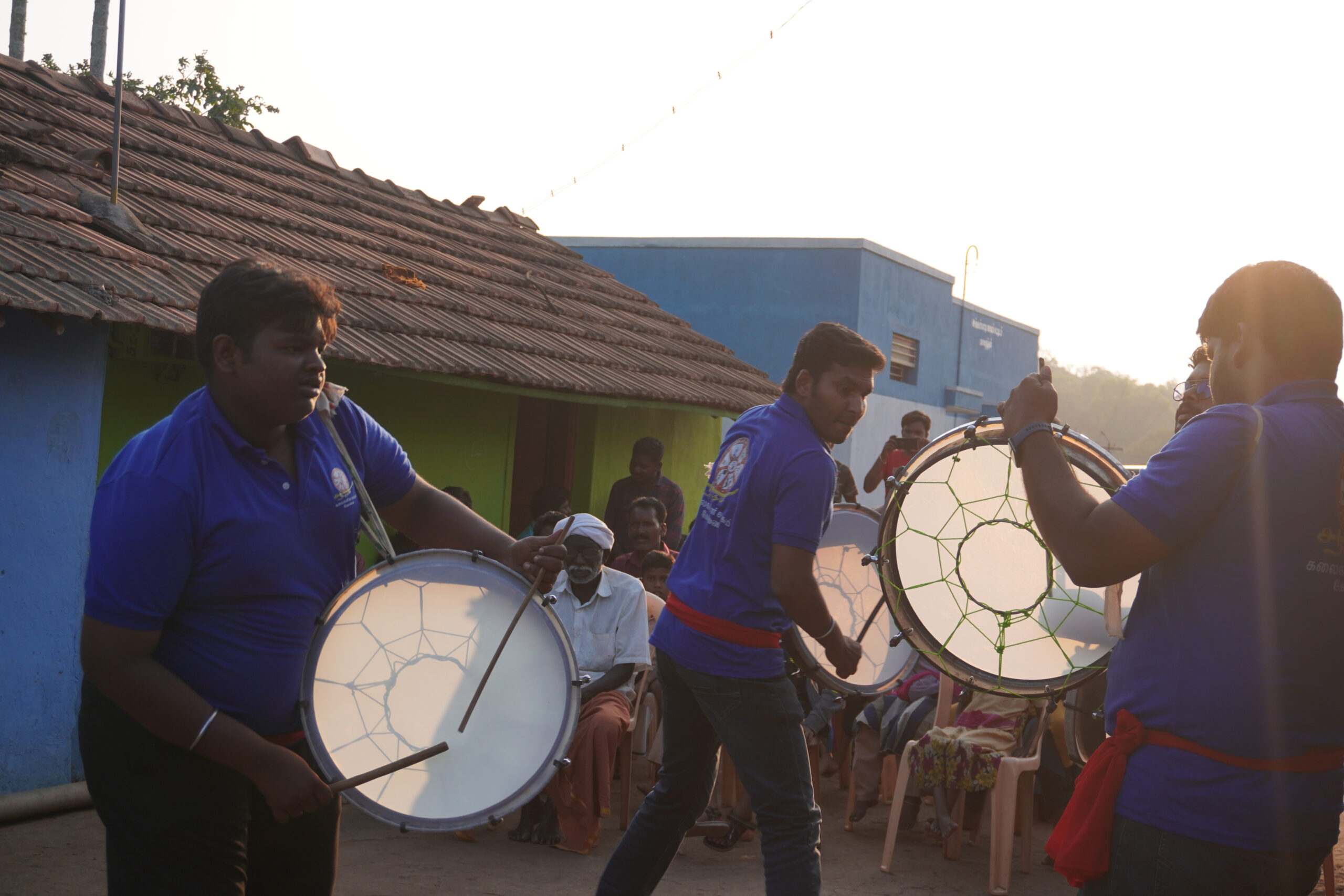Week 1 helped to set the pace, build the communication, lay the foundations and ended with a long weekend, owing to the national holiday on January 26th. Week 2 has been a subject intensive week, a quick transition that challenged the confidence but certainly not the capabilities of the students, especially of the Keystone group. While the CBE exercises continued, lectures were intensive and discussions had more to do with course material relating to the NBR and its landscape. The classes picked up pace over the week; everyone became an active participant and the discussions were much appreciated.
(Already after week 2 a rhythm has set in now. We start the day with an hour of community building exercise (CBE), followed by an hour for discussing the readings in groups which goes into the lecture for an hour. We break for lunch at 1pm and are back on campus by 2.30 (actually earlier since the internet is faster in the office). Post lunch we have an hour of formal Tamil classes for the Cornell students by Mrs. Lalitha Mohanraj at which time the indigenous students are doing English reading and conversation. At 4pm with tea we do an activity related to the lecture of the morning. We end with a 15 min debrief with the whole group.
Some discussions in class revealed that many of the Keystone students possess a wealth of knowledge that needs only to be tapped into by means of the right questions. They had the opportunity this week to be introduced to the reading material separately with a different resource person each time. This has been challenging but also appreciated as it puts them at par with the others in class discussions. Also this week, one change in approach was to allow each group to lead the discussion on different papers. Both groups found this useful as it revealed opinions from self-written summaries, uninfluenced by discussions that would otherwise have been introduced only from one side.
Classes focused on introducing to all, the concept of biosphere reserves and the terms by which they operated in biodiversity and human intensive landscapes. Much conversation revolved around conflict and the role of humans in the protection or destruction of biodiversity as it was an issue that the Indian group largely associated with their own lives.
Lectures were interspersed with group activities which generated much interest and participation but also left the students a little lost and introduced them to the challenges of life and a sneak peek into issues of governance in a culturally and biodiversity rich region such as this. A day trip of the Nilgiris was organised that was packed with a lot of sights and experiences. The students saw landscapes, met interesting people and got an impression of the biosphere its richness and problems-especially at forest look out points which were also tourist spots and littered all over with garbage! It was a wonderful experience, the bus packed with young people from entirely different worlds. For instance, the bus ride into the sanctuary provided much amusement as the new comers were awestruck at the sight of the elephants and their babies while the local folks stared with fear.
As the week progressed we became aware of more confidence and more interest shown by the students. They’d all committed to pushing their own limits to fully learn from the process. This was encouraging to see and by the end of the week the transformation of the group from students of entirely different worlds to a single group striving for the same ends and making allowance for one another’s differences was fully accomplished.


















